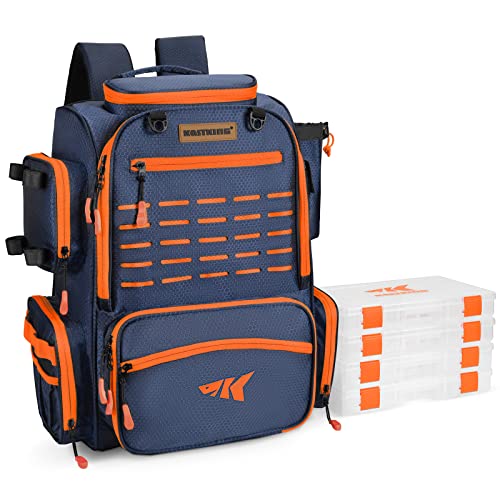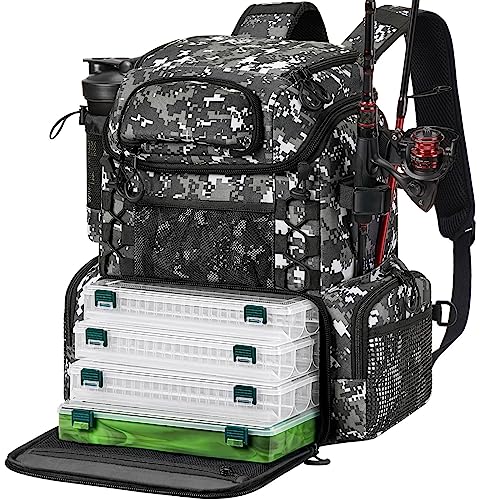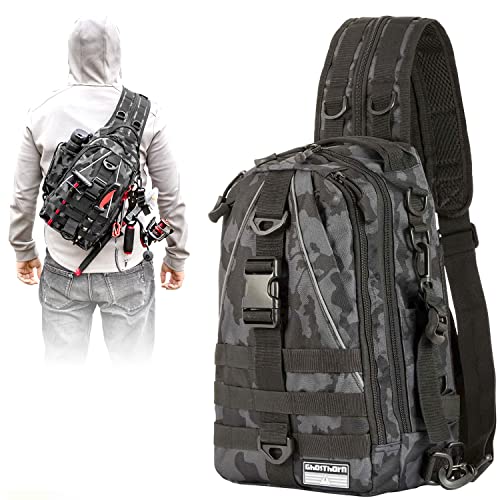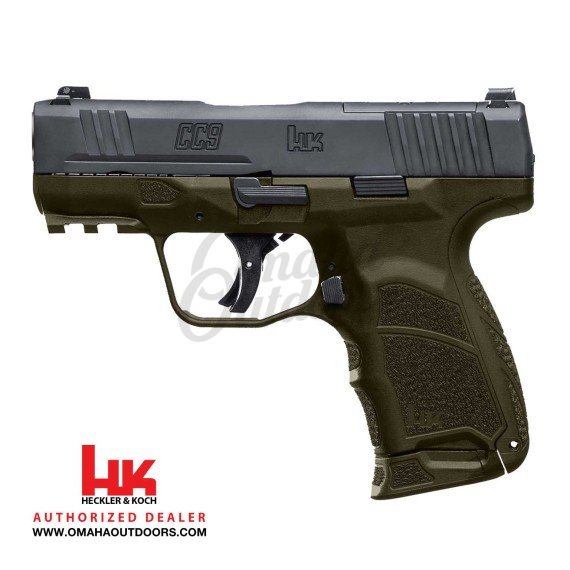Introduction
Summer steelhead fishing presents a unique set of challenges for anglers. As water temperatures warm and flows drop, these elusive fish become more difficult to locate and entice. However, by employing specific summer steelhead fishing techniques, you can increase your chances of success on the water.
In this comprehensive guide, we'll dive into the key strategies and tactics that will help you catch more steelhead during the summer months. From understanding steelhead behavior and selecting the right gear to reading water and presenting your offering effectively, we'll cover all the essential elements of successful summer steelhead fishing.
Whether you're a seasoned steelhead angler or just getting started, this article will provide you with the knowledge and insights needed to up your game and enjoy more productive days on the river. So let's dive in and explore the world of summer steelhead fishing techniques.
Understanding Summer Steelhead Behavior
To effectively target summer steelhead, it's crucial to understand how these fish behave in warmer water conditions. As temperatures rise, steelhead tend to seek out cooler, more oxygenated water. They often hold in deeper pools, near cold water tributaries, or in the faster, more turbulent sections of the river.
During the heat of the day, summer steelhead may become less active and retreat to the depths or dense cover. Early mornings, late evenings, and periods of cloud cover can provide more favorable conditions for fishing, as the cooler temperatures and lower light levels encourage steelhead to feed more actively.
When targeting summer steelhead, focus your efforts on the following water types:
-
Deep pools: Look for pools with depths of 6 feet or more, especially those with underwater structure like boulders, logs, or ledges where steelhead can find refuge from the current.
-
Riffles and pocket water: Fast, choppy water provides oxygenation and cover for steelhead. Fish the seams between fast and slow currents, as well as the pockets behind boulders and other structure.
-
Tail-outs: The transitional zone where a pool shallows out and flows into the next riffle can be a prime holding area for summer steelhead. Fish the deeper slots and edges of the tail-out, as well as any nearby cover.
By understanding where summer steelhead are likely to hold and when they're most active, you can focus your efforts on the most productive water and times of day.
Essential Summer Steelhead Fishing Gear
Having the right gear is essential for success when targeting summer steelhead. Here's a breakdown of the key equipment you'll need:
Rods and Reels
-
Rod length and action: For summer steelhead fishing, choose a rod between 8 and 10 feet in length with a medium to medium-heavy action. This will provide the necessary power to handle larger fish while still allowing for finesse presentations.
-
Reel selection: A quality spinning or casting reel with a smooth drag system is crucial. Look for reels with a capacity of 150-200 yards of 8-12 pound test line.
-
Recommended combos: Popular summer steelhead rod and reel combos include the Lamiglas X-11 series, Shimano Clarus, and G. Loomis E6X.
Lines, Leaders, and Tippets
-
Main line: Use a high-quality monofilament or braided line in the 8-12 pound test range. Mono provides stretch and shock absorption, while braid offers increased sensitivity and hook-setting power.
-
Leader material: Opt for a fluorocarbon leader in the 6-10 pound test range. Fluorocarbon is nearly invisible underwater and offers excellent abrasion resistance.
-
Tippet: When fishing with light lures or baits, add a 2-4 foot tippet of 4-8 pound test fluorocarbon to the end of your leader. This will provide a stealthy presentation and allow for more natural movement of your offering.
Lures and Baits
-
Lure selection: Top lure choices for summer steelhead include:
- Spinners (Mepps, Rooster Tail, Blue Fox)
- Spoons (Little Cleo, KO Wobbler, Krocodile)
- Plugs (Hot Shots, Wiggle Warts, Kwikfish)
- Jigs (Marabou, Nightmare, Bunny Leech)
-
Bait options: Effective baits for summer steelhead include:
- Cured roe (salmon eggs, trout eggs)
- Sand shrimp
- Nightcrawlers
- Artificial egg patterns (beads, soft beads)
Terminal Tackle
-
Hooks: Use high-quality, sharp hooks in sizes 2-6 for bait fishing and 6-10 for lure fishing. Octopus, egg, and bait holder hooks are popular choices.
-
Weights: Depending on the technique, use split shot, pencil lead, or slip sinkers to achieve the desired depth and presentation.
-
Floats: When drift fishing, use a buoyant float (bobber) to suspend your bait at the desired depth. Popular options include Cheater and Corkie floats.
By selecting the appropriate gear for summer steelhead fishing, you'll be well-equipped to handle the challenges and opportunities that come with targeting these magnificent fish in warmer water conditions.
Reading Water for Summer Steelhead
One of the most critical skills for successful summer steelhead fishing is the ability to read water and identify likely holding spots. By understanding how steelhead relate to current, structure, depth, and temperature, you can focus your efforts on the most productive areas.
Pools and Tail-Outs
Pools are prime holding areas for summer steelhead, particularly during the heat of the day. When fishing a pool, concentrate on the following areas:
-
Head: The upstream end of the pool where the current is strongest. Fish the edges of the main current flow, as well as any pockets or seams along the sides.
-
Gut: The deepest part of the pool, often located near the center. Use a deep-diving lure or a heavily-weighted bait rig to reach the bottom.
-
Tail-out: The downstream end of the pool where the water becomes shallower and the current speeds up. Fish the edges of the main flow, focusing on any deeper slots or depressions.
When fishing a tail-out, position yourself upstream and cast downstream, allowing your offering to swing through the current. Steelhead often hold in the deeper sections of the tail-out, waiting to ambush prey as it drifts by.
Riffles and Pocket Water
Riffles and pocket water are often overlooked by anglers, but these areas can hold significant numbers of summer steelhead, especially during cooler periods of the day. When fishing riffles and pocket water, keep the following in mind:
-
Current seams: Look for the edges where fast and slow currents meet. Steelhead often hold along these seams, using the slower water for rest and the faster water for feeding.
-
Boulders and structure: Cast upstream of boulders, logs, and other structure, allowing your offering to drift naturally along the edges of the obstruction.
-
Depth variations: Pay attention to changes in water depth, such as the drop-offs behind boulders or the deeper slots between rocks. These areas provide cover and holding spots for steelhead.
When fishing riffles and pocket water, use a slightly shorter leader and heavier weight to keep your offering down in the strike zone. A drift bobber rig or a well-weighted lure can be effective in these faster currents.
Runs and Glides
Runs and glides are the stretches of river between pools and riffles, characterized by moderate depth and flow. These areas often serve as travel corridors for summer steelhead as they move between holding spots. When fishing runs and glides, consider the following:
-
Inside bends: Steelhead often hold along the inside bends of the river, where the current is slower and the depth is greater. Focus on the deeper slots and any structure along the inside edge.
-
Outside seams: The seam between the main current and the slower water along the outside of the run can be a productive spot, especially if there is overhanging cover or undercut banks.
-
Transition zones: Pay attention to areas where the depth or current speed changes, such as the drop-off at the head of the run or the tail-out where the run flows into the next pool.
When fishing runs and glides, experiment with different presentations, such as swinging a lure or drifting bait under a float. Cover the water systematically, making sure to fish all the likely holding spots before moving on.
By learning to read water and identify the most promising areas, you'll be able to focus your summer steelhead fishing efforts on the spots that are most likely to produce fish. This will help you make the most of your time on the river and increase your chances of success.
Summer Steelhead Presentation Techniques
Presenting your lure or bait effectively is key to triggering strikes from summer steelhead. By employing a variety of presentation techniques and adapting to different water conditions, you can increase your odds of hooking up with these powerful fish.
Casting Lures and Bait
Casting allows you to cover a lot of water quickly and search for active fish. When casting lures or bait for summer steelhead, keep the following tips in mind:
-
Casting angles: Vary your casting angles to present your offering from different directions. Cast upstream, downstream, and across the current to find the most effective approach.
-
Retrieves: Experiment with different retrieves, such as a steady reel, a stop-and-go action, or a twitch-and-pause cadence. Pay attention to how steelhead respond to each technique.
-
Lure manipulation: When fishing lures like plugs or spinners, use your rod tip to impart additional action. Twitching, jerking, or sweeping the rod can trigger strikes from hesitant fish.
Drift Fishing
Drift fishing involves presenting your bait or lure naturally with the current, allowing it to move at the same speed as the flow. This technique is particularly effective when fishing deeper runs and pools. Here are some key points to consider:
-
Weighting: Use enough weight to keep your offering near the bottom, but not so much that it constantly snags. Experiment with different sizes and types of weights, such as split shot or pencil lead.
-
Leader length: Adjust your leader length based on the depth and current speed. A longer leader will allow your bait to drift more naturally, while a shorter leader will provide better control in faster water.
-
Mending: Mend your line upstream or downstream to maintain a natural drift. This involves flipping or rolling your line to counteract the effects of current and prevent your offering from moving too quickly or unnaturally.
Swinging Lures and Flies
Swinging involves casting across the current and allowing your lure or fly to swing downstream in an arc. This technique is particularly effective when fishing with a two-handed spey or switch rod. When swinging for summer steelhead, keep the following in mind:
-
Swing speed: Vary the speed of your swing by mending or using different casting angles. A slower swing will keep your offering in the strike zone longer, while a faster swing can trigger aggressive strikes.
-
Depth control: Use sinking tips or weighted flies to control the depth of your swing. In deeper water, a heavier sink tip or a weighted fly will help you reach the strike zone.
-
Hang-down: After your offering has completed its swing, let it hang downstream for a few seconds before retrieving. Steelhead will often follow a swinging lure or fly and strike just as it begins to rise.
Bouncing and Plunking
Bouncing and plunking are techniques that involve presenting your bait or lure stationary in the current. These methods can be particularly effective when fishing deep, slow-moving pools. Here's how to employ these techniques:
-
Bouncing: Also known as back-bouncing, this technique involves using a heavy weight to bounce your bait along the bottom. Cast upstream and let your weight bounce and settle as it drifts downstream, keeping your line tight to detect strikes.
-
Plunking: This technique involves casting a stationary bait rig, often a Spin-N-Glo or other buoyant bait, into a deep pool or run and letting it sit on the bottom. The current will cause the bait to spin and release scent, attracting nearby steelhead.
By mastering a variety of presentation techniques and adapting to different water conditions, you'll be well-equipped to tackle the challenges of summer steelhead fishing. Experiment with different approaches and pay attention to what works best in each situation to maximize your success on the water.
Fighting and Landing Summer Steelhead
Once you've hooked a summer steelhead, the real challenge begins. These powerful fish are known for their explosive runs and acrobatic leaps, making them a thrilling adversary on the end of your line. To successfully land a summer steelhead, keep the following tips in mind:
Setting the Hook
When a steelhead strikes, it's important to set the hook quickly and firmly to ensure a solid connection. Here's how to set the hook effectively:
-
Bait fishing: When fishing with bait, wait until you feel the weight of the fish before setting the hook. This usually means letting the steelhead take the bait for a few seconds before striking.
-
Lure fishing: When fishing with lures, set the hook immediately upon feeling the strike. A quick, upward sweep of the rod is usually sufficient to drive the hook home.
Playing the Fish
Once you've set the hook, it's important to play the fish carefully to avoid breaking your line or pulling the hook. Here are some key points to keep in mind:
-
Rod position: Keep your rod tip high and maintain a bend in the rod to absorb the steelhead's runs and jumps. Lower the rod tip when the fish is running to avoid putting too much pressure on the line.
-
Drag adjustment: Make sure your drag is set properly before you start fishing. A good rule of thumb is to set the drag to about one-third of your line's breaking strength. Adjust the drag as needed during the fight to maintain consistent pressure on the fish.
-
Line control: Keep your line tight and maintain constant pressure on the fish. If the steelhead makes a sudden run or jump, be prepared to give line to avoid a break-off.
Netting the Fish
When the steelhead is ready to be landed, it's important to use proper netting technique to avoid injuring the fish or losing it at the last moment. Here's how to net a steelhead safely and effectively:
-
Net size: Use a net with a large, deep bag and a soft, rubberized mesh to minimize harm to the fish. A net with a long handle will allow you to reach out and scoop up the fish more easily.
-
Netting technique: When the steelhead is close enough, sweep the net under the fish from head to tail. Lift the net quickly and smoothly to avoid giving the fish a chance to escape.
-
Fish handling: Once you've netted the steelhead, keep it in the water as much as possible to minimize stress. If you plan to release the fish, remove the hook carefully and support the fish in the current until it's ready to swim away on its own.
Catch and Release Best Practices
If you plan to release your summer steelhead, it's important to handle the fish carefully to maximize its chances of survival. Here are some best practices for catch and release:
-
Use barbless hooks: Pinch down the barbs on your hooks to make them easier to remove and minimize damage to the fish.
-
Avoid air exposure: Keep the steelhead in the water as much as possible, and avoid lifting it out of the water for extended periods.
-
Wet your hands: Before handling the fish, wet your hands to avoid removing the protective slime coat on its skin.
-
Support the fish: When holding the steelhead for a photo, support its body horizontally and avoid squeezing or putting pressure on its internal organs.
By following these tips and techniques, you'll be well-prepared to fight and land summer steelhead successfully while minimizing harm to the fish. Remember, the goal is to enjoy the thrill of the catch while also being a responsible steward of the resource.
Conclusion
Summer steelhead fishing is a challenging and rewarding pursuit that tests the skills and dedication of even the most experienced anglers. By understanding the unique characteristics and behaviors of these magnificent fish, and employing the right techniques and strategies, you can increase your chances of success on the water.
Throughout this guide, we've covered the essential elements of summer steelhead fishing, from understanding steelhead behavior and selecting the right gear to reading water, presenting your offering effectively, and fighting and landing fish safely. By putting these principles into practice and adapting to the conditions at hand, you'll be well on your way to unlocking the secrets of summer steelhead.
Remember, summer steelhead fishing is as much about the journey as it is the destination. Embrace the challenges, learn from your experiences, and take time to appreciate the beauty and wonder of the rivers and fish that make this pursuit so special.
As you continue to develop your skills and knowledge as a summer steelhead angler, keep the following key points in mind:
-
Be patient and persistent: Summer steelhead can be elusive and unpredictable, so don't get discouraged if you don't find success right away. Keep at it, and trust in the process.
-
Adapt to changing conditions: Pay attention to factors like water temperature, clarity, and flow, and be willing to adjust your tactics accordingly. The most successful anglers are those who can adapt on the fly.
-
Experiment and innovate: Don't be afraid to try new techniques, lures, or approaches. Some of the most effective summer steelhead tactics were developed by anglers who were willing to think outside the box.
-
Respect the resource: Practice catch and release when possible, handle fish carefully, and be a good steward of the rivers and streams you fish. By taking care of the resource, you'll help ensure that future generations can enjoy the same opportunities.
With dedication, skill, and a bit of luck, you'll soon find yourself holding a hard-fighting summer steelhead in your hands, marveling at its power and beauty. And when that moment comes, you'll understand why so many anglers are drawn to this pursuit, season after season, year after year.
So gear up, hit the water, and embrace the challenge of summer steelhead fishing. The rewards - both tangible and intangible - are well worth the effort.





